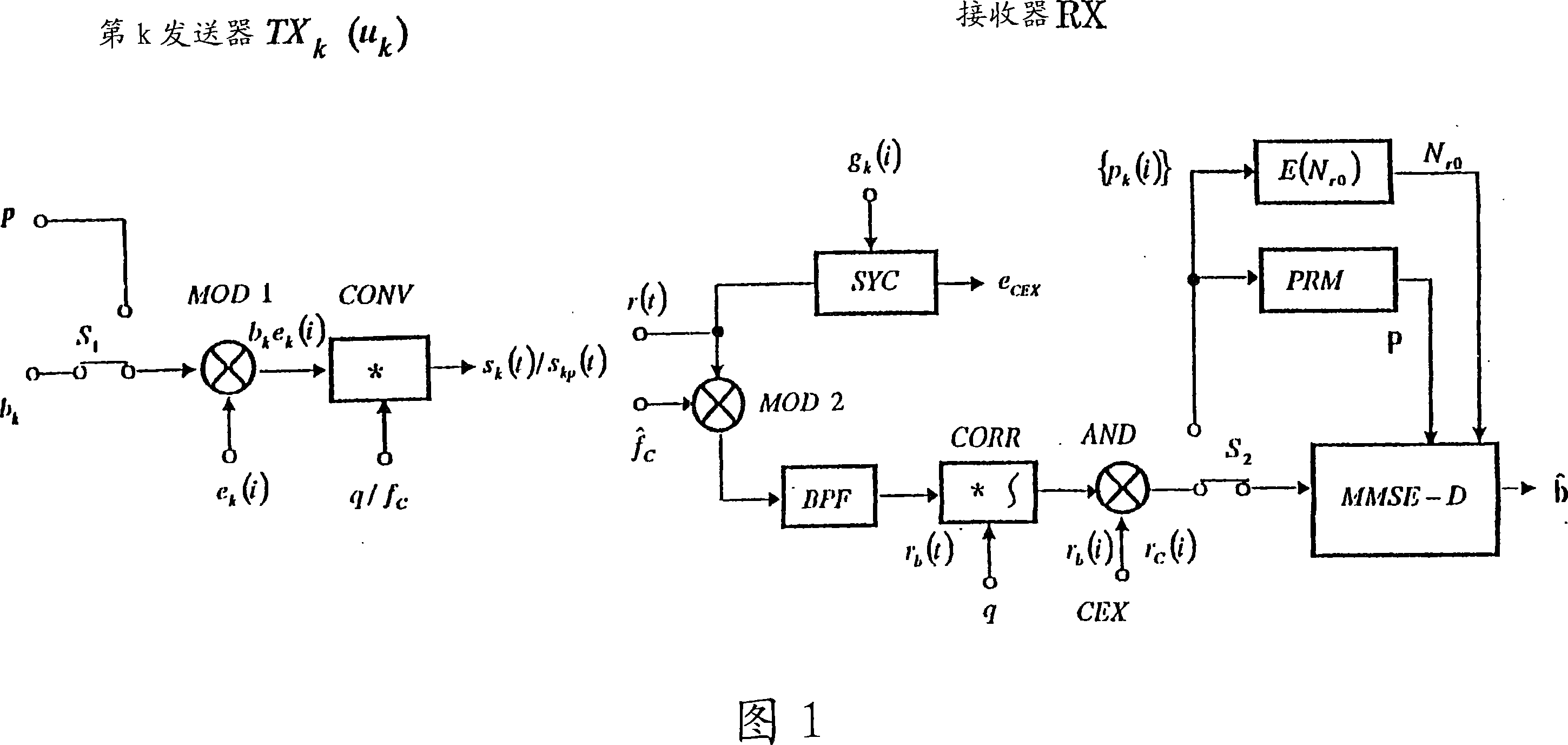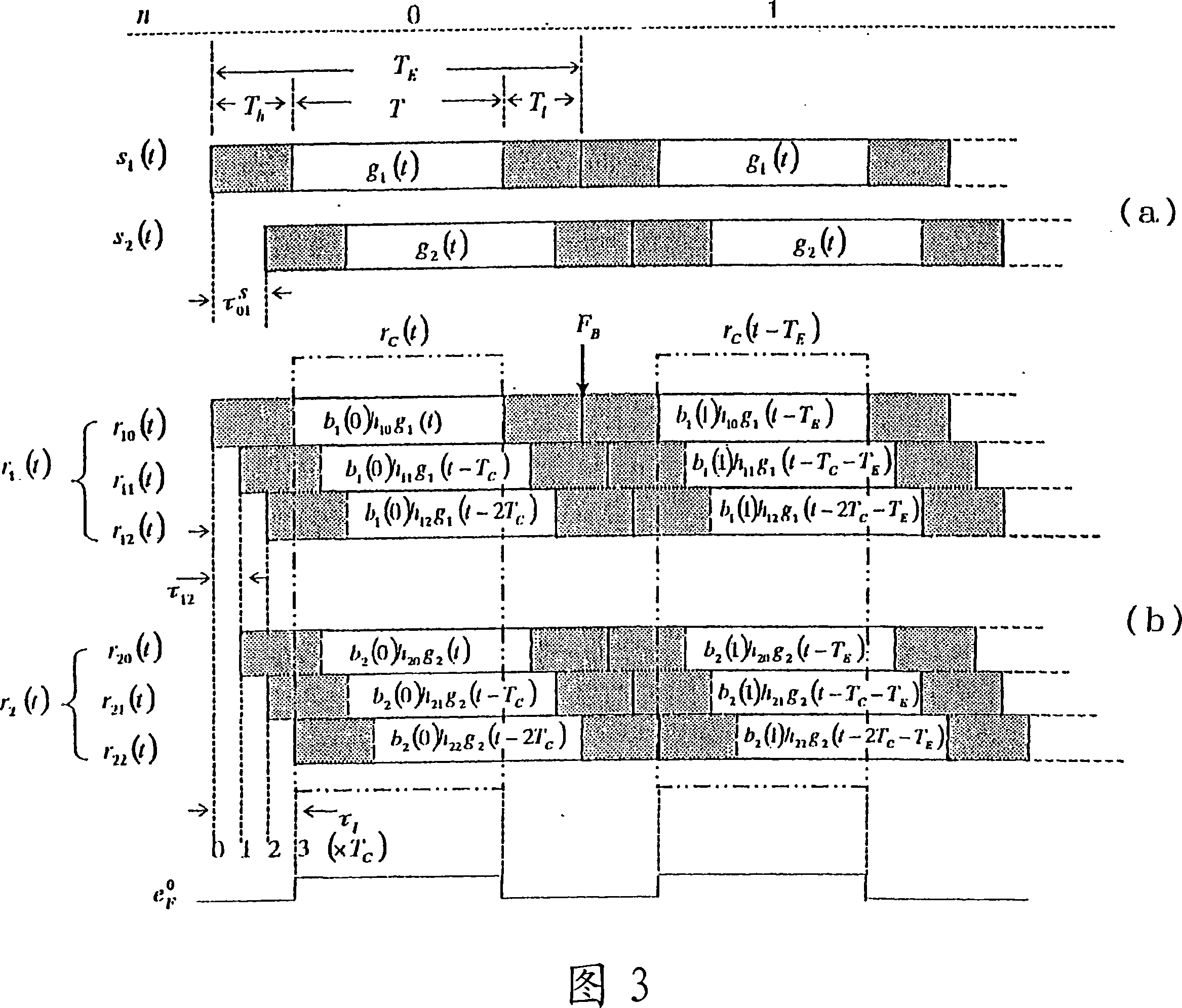Code-division multiplex signal decorrelation/identification method
一种码分多址、区分系统的技术,应用在传输系统、复用码分配、电气元件等方向,能够解决站间干扰阻碍、可容纳的用户数量低频率利用效率、不容易获得精确的导频响应等问题
- Summary
- Abstract
- Description
- Claims
- Application Information
AI Technical Summary
Problems solved by technology
Method used
Image
Examples
Embodiment Construction
[0055] FIG. 1 is an explanatory diagram of assistance in the first embodiment of the present invention, and is a block diagram showing the structure of a transceiver of a code division multiple access (CDMA) communication system. In Figure 1, the left side shows the kth user u k The kth (k=0, 1, 2, ... K) transmitter TX used k , the right shows the receiver RX used in the base station. Use symbol period as T E the binary data b k (∈±1) as pair to transmitter TX k input of. Symbol p represents a pilot input set by p=1. Use switch S shown in figure (a) 1 The pilot input p is transmitted in a time-division manner at such a timing that it does not overlap in time with transmission data of all users and pilots transmitted by other users. Enter b at modulator MOD k Using protection (to be described later) on the envelope sequence e k (i) Modulate to generate E pulse sequence b k e k (i). The convolution multiplier CONV uses the corresponding pulse pairs of the above pul...
PUM
 Login to View More
Login to View More Abstract
Description
Claims
Application Information
 Login to View More
Login to View More - R&D
- Intellectual Property
- Life Sciences
- Materials
- Tech Scout
- Unparalleled Data Quality
- Higher Quality Content
- 60% Fewer Hallucinations
Browse by: Latest US Patents, China's latest patents, Technical Efficacy Thesaurus, Application Domain, Technology Topic, Popular Technical Reports.
© 2025 PatSnap. All rights reserved.Legal|Privacy policy|Modern Slavery Act Transparency Statement|Sitemap|About US| Contact US: help@patsnap.com



